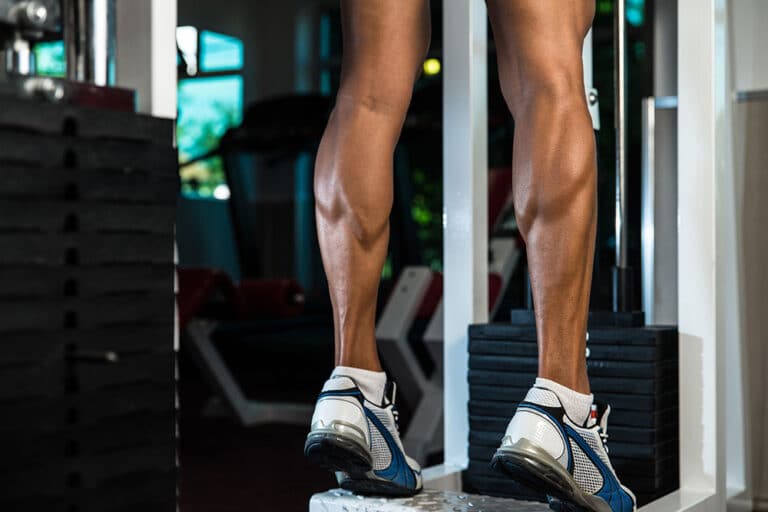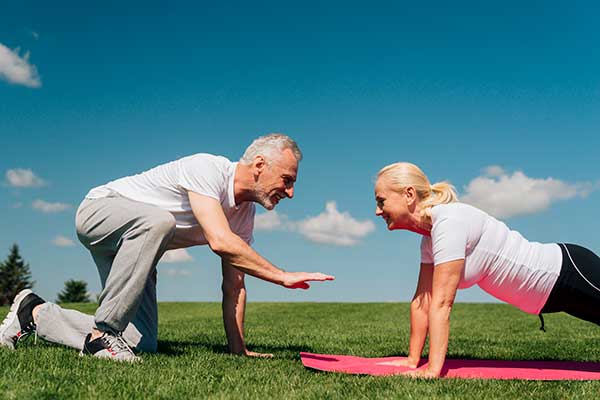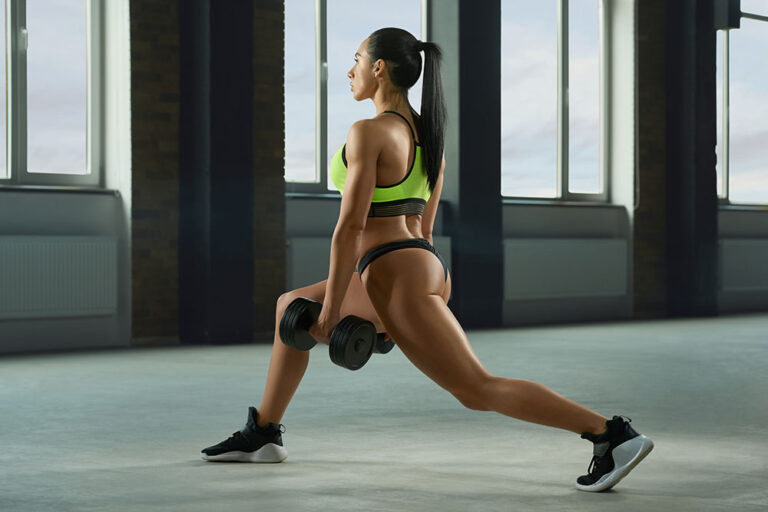Mastering Pistol Squats
Understanding Pistol Squats
Pistol squats, also known as single-leg squats with the non-working leg extended straight in front, are considered one of the most challenging leg exercises. They require a combination of balance, strength, mobility, flexibility, and coordination. This unique form of squat primarily targets the quads, hamstrings, glutes, calves, and core, making it an excellent exercise for comprehensive lower body development.
| Muscle Group | Engagement Level |
|---|---|
| Quadriceps | High |
| Hamstrings | Moderate |
| Glutes | High |
| Calves | Moderate |
| Core | High |
In a pistol squat, the practitioner descends into a deep squat on one leg while the other leg remains extended in front. Achieving this position requires significant single-leg strength, stability, and thorough mobility in the ankle, knee, and hip joints.
Benefits of Pistol Squats
Pistol squats are not just a display of strength but are also packed with a variety of benefits that contribute to overall functional fitness:
- Enhanced Lower Body Strength: Pistol squats engage nearly every muscle in the lower body, including the quadriceps, hamstrings, glutes, and calves. This comprehensive engagement results in significant strength gains.
- Improved Balance and Stability: This exercise focuses on the hip adductors and other muscles that are crucial for balance. Training with pistol squats refines one’s ability to maintain stability on a single leg, which is invaluable for various functional movements.
- Increased Mobility and Flexibility: Executing a pistol squat demands substantial mobility in the ankles, knees, and hips. Regular practice can lead to increased flexibility and joint health.
- Core Strengthening: Keeping the torso upright during the exercise requires significant core stabilization. This helps to build a strong and stable core, which is crucial for overall movement efficiency.
- Functionality for Daily Activities: Pistol squats mimic real-life movements and enhance functional fitness. This type of training helps in carrying out daily activities more efficiently, reducing the risk of injury.
For a holistic leg strengthening routine, consider integrating other leg exercises, such as how to do bodyweight squats and exploring bodyweight lunge variations.
In conclusion, mastering pistol squats provides significant benefits, transforming lower body strength, improving balance, enhancing mobility, and contributing to functional fitness. By understanding and practicing this challenging exercise, health enthusiasts can unlock a new level of physical capability and overall fitness.
Essential Components
Mastering the pistol squat, a challenging single-leg exercise, requires an understanding of its essential components. This includes recognizing the primary muscle groups targeted and appreciating the vital role of balance.
Muscle Groups Targeted
Pistol squats are a powerhouse leg exercise, engaging multiple muscles simultaneously. The main muscle groups targeted by this exercise include:
- Quadriceps (Quads): The quads are heavily engaged throughout the entire movement, especially when extending the knee at the top of the squat.
- Hamstrings: These muscles work on the descent to help control and stabilize the movement.
- Glutes: The gluteus muscles, particularly the gluteus maximus, are activated during the upward phase to drive the body back to a standing position.
- Calves: The calf muscles help stabilize the ankle and foot during the entire motion.
- Core Muscles: The abdominal and lower back muscles stabilize the torso, ensuring proper posture and reducing the risk of injury.
Pistol squats are especially effective for the outside hip muscles, crucial for maintaining balance and stability.
| Muscle Group | Primary Function |
|---|---|
| Quadriceps | Knee extension |
| Hamstrings | Knee flexion and stability |
| Glutes | Hip extension |
| Calves | Ankle stabilization |
| Core | Torso stabilization |
For those new to bodyweight exercises, understanding the primary muscles involved can guide your training. Check out our primer on how to do bodyweight squats for additional foundational exercises.
Importance of Balance
Balance is a critical component of executing a successful pistol squat. This exercise involves squatting almost your entire body weight on one leg, demanding substantial stability and coordination. Here’s why balance is essential:
- Engages Stabilizing Muscles: The movement engages the stabilizing muscles in the lower body, reducing the risk of injury both in the gym and daily life (Shape).
- Enhances Functional Fitness: Balance training prepares the body for various physical activities and daily tasks, promoting overall functional range of motion (Peloton).
- Aids in Injury Prevention: Improved balance reduces the likelihood of falls and related injuries, particularly beneficial as individuals age.
Incorporate balance-focused exercises, such as single-leg stands or stability ball routines, to complement your pistol squat practice. For more balance and coordination exercises, explore our post on wall exercises for legs.
Balancing during pistol squats enhances overall strength, flexibility, and stability, making it a holistic exercise. Be sure to follow our guidance on bodyweight leg challenge to further improve your stability and strength.
Progression Tips
Building Strength and Balance
Pistol squats require squatting your entire body weight on one leg. This exercise demands exceptional strength, flexibility, balance, and stabilization (Peloton). To prepare for this, focusing on unilateral strength and balance is crucial. Increasing ankle, knee, and hip mobility, along with hip flexor and leg strength, is essential (Peloton).
Here are some useful progression strategies:
- Slowly Lowering to a Bench: Start by slowly lowering yourself onto a bench. This helps build strength and stability gradually.
- Using a Slant Board: A slant board can assist in improving ankle mobility, ensuring better overall balance.
- Adding Assistance to Arms: Utilize tools like TRX or rings for balance and support.
These regressions help improve strength and stability progressively.
Mobility and Coordination
Mobility and coordination play a pivotal role in achieving a successful pistol squat. The focus should be on the hip, knee, and ankle joints to identify any specific joint issues that may impede progress.
Here are some techniques to enhance mobility and coordination:
- Video Assessment: Use a video to assess and identify reasons for failing in a pistol squat. This will help pinpoint specific joint-related problems.
- Gradual Increase in Reps: Start with achieving 2-3 decent reps using regressions, then gradually increase the reps. This helps the body acclimate and adapt to the stress and demands (Move More Sit Less).
- Active Mobility Training: Engaging in active mobility training can significantly impact how your body feels and moves, thus aiding in reducing aches, stiffness, and dull pains (Move More Sit Less).
For more detailed guidance on leg exercises to build strength and mobility, check out our various articles on how to build leg muscle without weights and plyometric exercises for legs.
Safety and Form
Ensuring proper safety and form is vital when progressing to pistol squats. This section will cover strategies for [injury prevention] and maintaining [proper technique].
Injury Prevention
For injury prevention, it is crucial first to understand the complexity of the pistol squat. This exercise requires good balance, strength, and mobility. Here are key considerations to prevent injuries:
- Ease Into the Exercise: Start with a limited range of motion and gradually increase depth.
- Use a Support: Hold onto a stable object, such as a chair or bar, to avoid falling and reducing stress on the knees and lower back.
- Test Ankle Flexibility: Adequate dorsiflexion is essential. If struggling, elevate the heels or hold a weight in hands for counterbalance.
- Improve Mobility: Work on knee and ankle mobility using PAILs (Progressive Angular Isometric Loading) and RAILs (Regressive Angular Isometric Loading) exercises (Markow Training Systems).
- Master Prerequisite Exercises: Before attempting pistol squats, master standard and air squats, and work your way through exercises like single-leg isometric holds and assisted pistol squats (Outside Online).
Proper Technique
Proper technique is essential for performing pistol squats effectively and safely. Follow these guidelines for the correct form:
- Neutral Spine: Maintain a neutral spine throughout the movement to avoid undue stress on your back.
- Knee Alignment: Ensure that the knee tracks significantly past the line of the toe to maintain balance and avoid lateral pelvic tilt (Fitness Stack Exchange).
- Center of Mass: Keep the center of mass over the most stable part of the support leg to avoid tipping over.
- Controlled Descents: Lower yourself slowly and with control to maintain balance and engage the right muscle groups.
| Exercise Stage | Technique Focus | Key Problem Avoided |
|---|---|---|
| Air Squat | Neutral spine, knee tracking | Basic alignment issues |
| Single-leg Hold | Balance, initial strength | Muscle imbalances |
| Assisted Pistol Squat | Depth control, using support | Falling, over-straining |
| Rolling Pistol Squat | Coordination, smooth transitions | Loss of balance |
| Full Pistol Squat | Full depth, stable posture | Knee stress, improper form |
Consistency in these methods helps to protect against injuries while improving strength and stability. For more tips on achieving proper form, explore our articles on how to do bodyweight squats and leg strengthening for runners.
Common Mistakes to Avoid
When learning how to do pistol squats, it’s essential to be mindful of common errors that could hinder progress and increase the risk of injury. Here, we’ll discuss two prevalent mistakes: the heel lift issue and poor posture and alignment.
Heel Lift Issue
A common problem during pistol squats is the heel lifting off the ground. This often occurs due to a lack of strength in the legs, glutes, and abs, as well as insufficient ankle flexibility and strength. Ensuring your heel stays grounded is crucial for proper form and balance. Here are some tips to avoid this mistake:
- Ankle Mobility Exercises: Incorporate exercises to improve ankle flexibility, such as ankle circles and calf stretches.
- Strength Training: Focus on building overall leg strength with exercises like bodyweight lunges and calf exercises without weights.
- Progressive Training: Gradually progress from simpler exercises to the pistol squat. Starting with less challenging movements like bodyweight squats can be beneficial.
| Exercise | Benefit |
|---|---|
| Ankle Circles | Enhance ankle mobility |
| Calf Stretches | Improve flexibility |
| Bodyweight Lunges | Strengthen legs and glutes |
| Calf Exercises | Increase calf strength and flexibility |
Posture and Alignment
Another frequent mistake in pistol squats is improper posture and alignment. Hunching forward excessively can compromise the effectiveness of the exercise and increase the risk of injury. Maintaining an upright and aligned posture is crucial. To achieve this:
- Align Your Upper Body: Squeeze your shoulder blades down and back, brace your abs, and lift your chest. This helps prevent excessive hunching.
- Full-Body Engagement: Engage your entire body during the movement, focusing on maintaining tension in the abs, legs, and glutes. This not only improves form but also enhances stability and balance.
- Practicing Proper Technique: Dedicate time to master the proper technique by breaking down the movement. You can start with supported pistol squats, using a stable surface to help maintain balance and form.
To learn more about the proper technique and form, check out our guide on proper technique for squats and leg exercises.
Combining these strategies can help health enthusiasts perfect their pistol squats while avoiding common mistakes. For more training strategies and effective exercises, explore our related articles on bodyweight leg challenges and leg strengthening for runners.
Training Strategies
Regressions and Progressions
Progressing to a pistol squat requires patience, dedication, and the right strategy. For those new to this exercise, starting with regressions can build the necessary strength and stability.
Regressions
- Bench or Box Assist: Begin by slowly lowering yourself onto a bench or box. This helps in managing the descent and gradually building leg strength (Markow Training Systems).
- Slant Board: Use a slant board to assist in balance, making the movement more accessible as you build stability.
- Assistance with Tools: Utilize tools like TRX, rings, a chair, or a couch for added support.
Progressions
To effectively progress into a full pistol squat, follow this sequence of exercises:
- Standard Squat: Master the basic squat to develop foundational strength.
- Single-Leg Isometric Hold: Practice holding a single-leg squat position to build balance.
- Assisted Pistol Squat: Perform a single-leg squat to a box for partial depth and controlled movement.
- Rolling Pistol Squat: Incorporate a rolling motion to engage core strength and stability.
- Full Pistol Squat: Execute the full range of motion in the pistol squat.
Effective Exercises
Incorporating a variety of supporting exercises can effectively prepare the body for pistol squats. These exercises focus on strength, balance, and mobility.
Strengthening Exercises
| Exercise | Target Area |
|---|---|
| Air Squats | Quadriceps, Glutes |
| Single-Leg Deadlifts | Hamstrings, Balance |
| Bulgarian Split Squats | Glutes, Quads, Stability |
| Calf Raises | Calves, Ankle Strength |
Balance and Stability Exercises
| Exercise | Description |
|---|---|
| Single-Leg Stands | Stand on one leg to enhance balance. |
| Isometric Holds | Hold a single-leg squat position without moving. |
| Suspension Trainer Squats | Use a TRX or rings for guided squats. |
Mobility and Flexibility
Active mobility training significantly impacts how your body moves, reducing stiffness and enhancing joint mobility.
- Hip Mobility Drills: Improve the range of motion in your hip joints.
- Ankle Flexibility Exercises: Prevent ankle stiffness and enhance strength.
For additional guidance on leg exercises, explore our articles on quick leg workouts with no equipment, calf exercises without weights, and leg strengthening for runners.
- About the Author
- Latest Posts
Johnnie D. Jackow Sr., the founder and CEO of Total Body Fitness, Worldwide, has a long-standing career in the fitness industry. He began as a certified personal trainer in the mid-90s and soon after authored his first weight loss book in 1998. This led to the launch of Total Body Fitness, Nationwide in the USA at the same time. Johnnie gained recognition as the fitness guru of his time, running infomercials on local TV late at night in Houston, Texas. Over the years, he has helped more than 40,000 individuals from all over the world achieve their health and fitness goals. With over 60,000 hours of documented training in integrative functional medicine, he completed his PhD in human physiology in 2010. His primary objective is to assist people in reaching their health and fitness goals through alternative approaches rather than relying solely on conventional medicine and pharmaceutical drugs. Today, with almost three decades of experience under his belt, Johnnie continues to be a leader in health and fitness.








